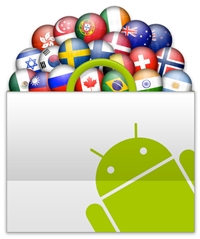Android may have the largest piece of the pie in terms of U.S. market share, and there are 100 million Android devices activated around the world. But when it comes to paying for apps, users aren't very keen.  According to a report published by Distimo, only two paid applications (Beautiful Widgets and Robo Defense) have been downloaded more than half a million times (though less than 1 million). In contrast, six paid applications on iOS hit the same number within two months, in the U.S. alone. Similarly, only five paid Android games sold more than 250,000 copies worldwide -- while 10 paid games in Apple's App Store sold the same number, again in two months, and again in U.S. alone. Android users may not be as willing to invest in mobile apps compared to iOS users, but that doesn't mean there's less money to be made. Most applications on Android are free and ad-supported, including the hugely popular Angry Birds. As long as users actively use their free apps, developers can still get their bills paid. "We're very happy with the monetization that it provides us with," said Rovio CEO Peter Vesterbacka, commenting on the free-apps-with-ads model on Android. Why Android users are less likely to buy apps than iPhone users Android devices come in many different specifications and form factors. A fair number of them are relatively cheap low-end devices, which attract younger users and frugal adults. On the other hand, iPhones are relatively pricey, attracting only users with more moolah to spare. Also, pirating apps on Android is almost effortless. It doesn't require any hacking, jailbreaking or other wizardry. Simply source for the cracked app installation file and copy it to your Android device. It works out of the box. On the iPhone, it's not possible to install any apps that aren't downloaded from the App Store, unless you jailbreak the device. Many users who are conservative or not particularly tech savvy would rather not try. Lastly, it took Google forever to bring paid apps to the rest of the world. Initially, paid apps were only available in the U.S. and a handful of Europe countries. For users in other locations, the only way to have paid apps was to steal them. Now that apps can be purchased in 131 countries, that's not so much of an issue. Source: Fortune Tech
According to a report published by Distimo, only two paid applications (Beautiful Widgets and Robo Defense) have been downloaded more than half a million times (though less than 1 million). In contrast, six paid applications on iOS hit the same number within two months, in the U.S. alone. Similarly, only five paid Android games sold more than 250,000 copies worldwide -- while 10 paid games in Apple's App Store sold the same number, again in two months, and again in U.S. alone. Android users may not be as willing to invest in mobile apps compared to iOS users, but that doesn't mean there's less money to be made. Most applications on Android are free and ad-supported, including the hugely popular Angry Birds. As long as users actively use their free apps, developers can still get their bills paid. "We're very happy with the monetization that it provides us with," said Rovio CEO Peter Vesterbacka, commenting on the free-apps-with-ads model on Android. Why Android users are less likely to buy apps than iPhone users Android devices come in many different specifications and form factors. A fair number of them are relatively cheap low-end devices, which attract younger users and frugal adults. On the other hand, iPhones are relatively pricey, attracting only users with more moolah to spare. Also, pirating apps on Android is almost effortless. It doesn't require any hacking, jailbreaking or other wizardry. Simply source for the cracked app installation file and copy it to your Android device. It works out of the box. On the iPhone, it's not possible to install any apps that aren't downloaded from the App Store, unless you jailbreak the device. Many users who are conservative or not particularly tech savvy would rather not try. Lastly, it took Google forever to bring paid apps to the rest of the world. Initially, paid apps were only available in the U.S. and a handful of Europe countries. For users in other locations, the only way to have paid apps was to steal them. Now that apps can be purchased in 131 countries, that's not so much of an issue. Source: Fortune Tech



